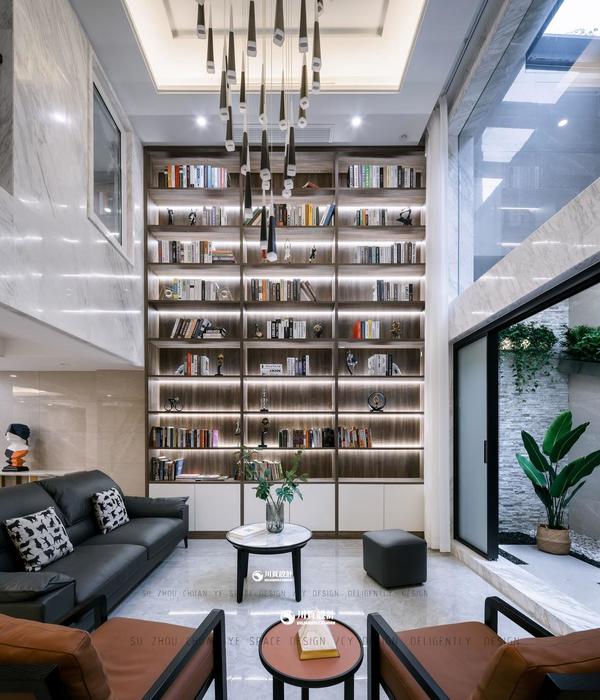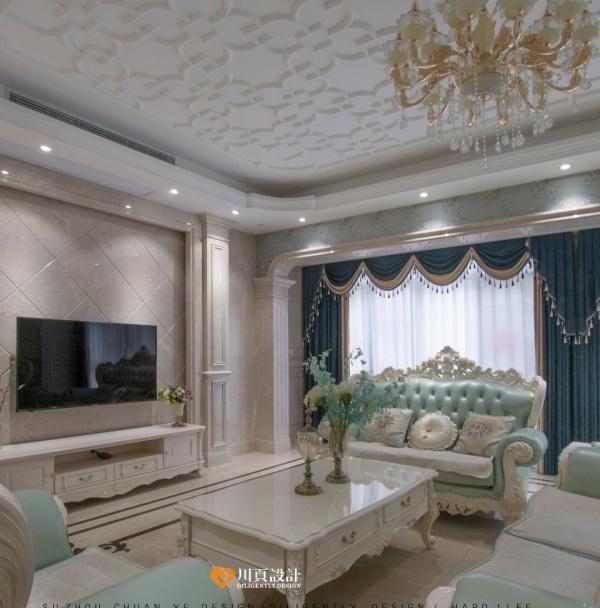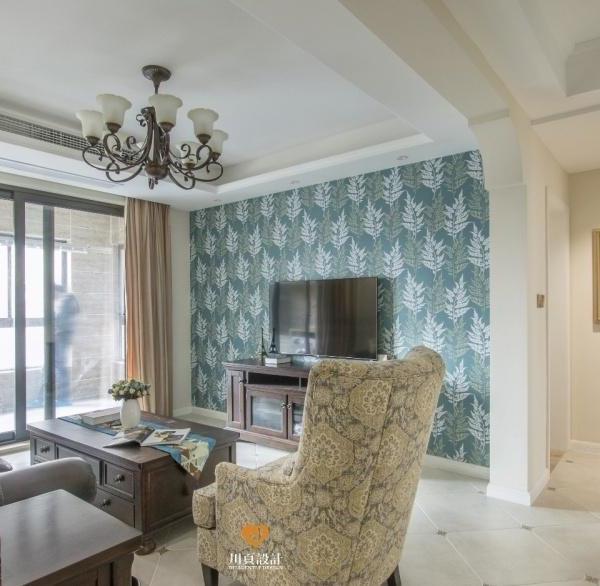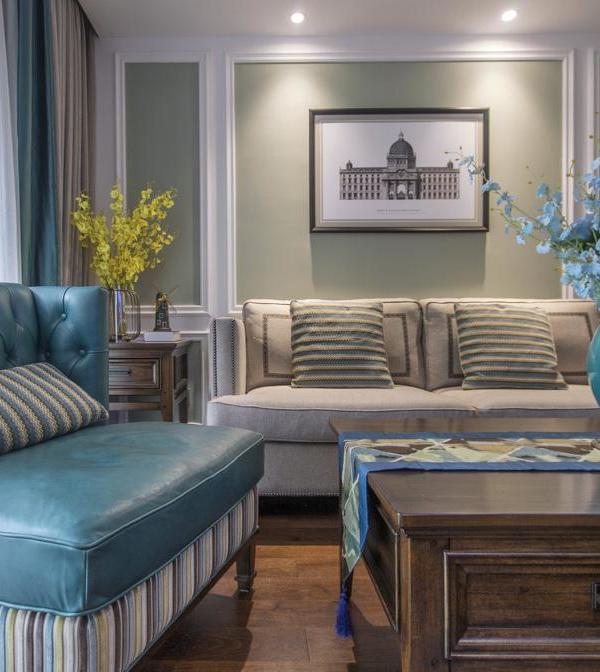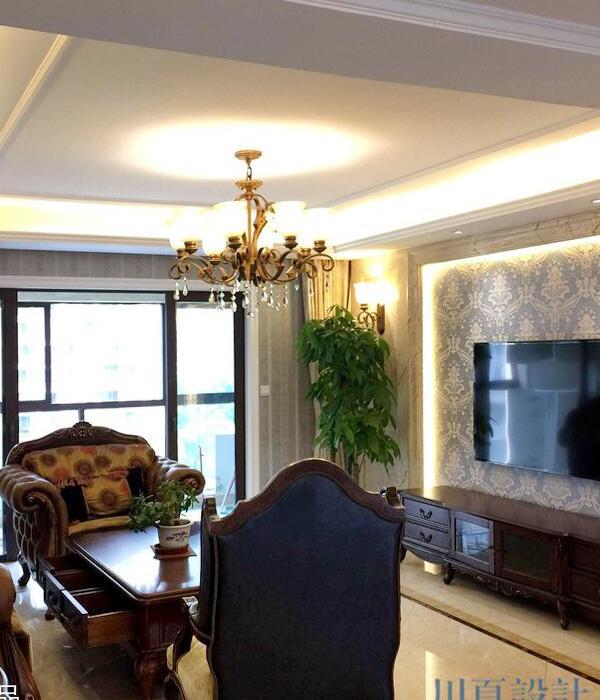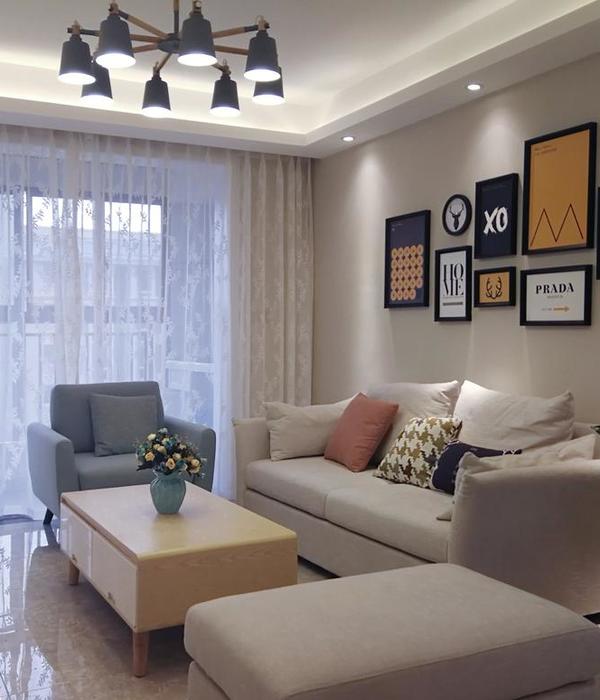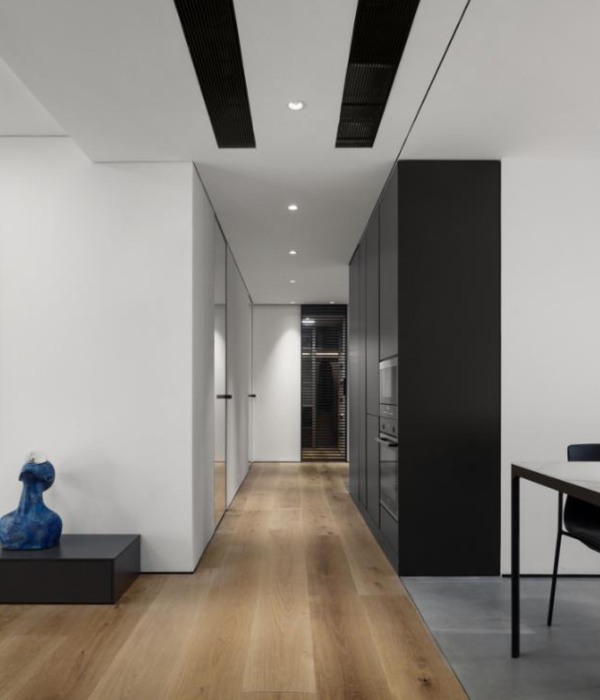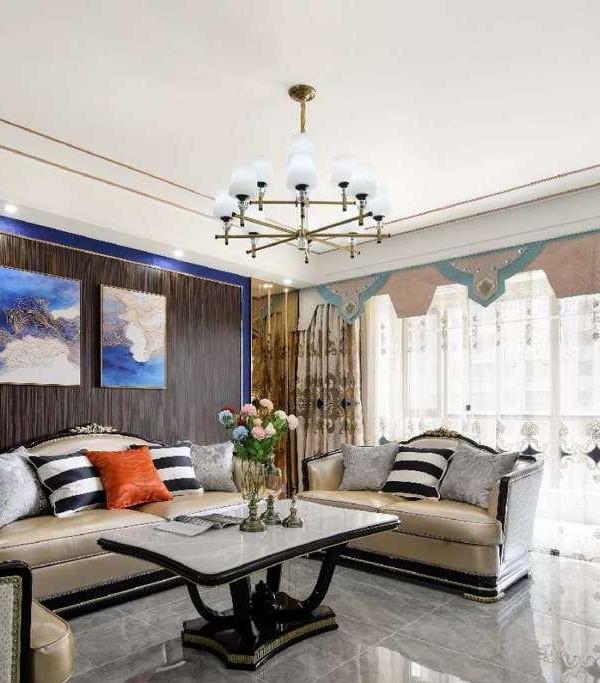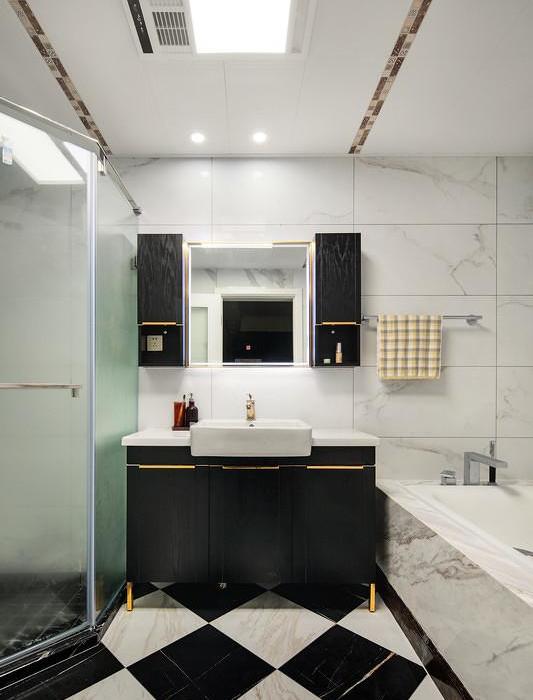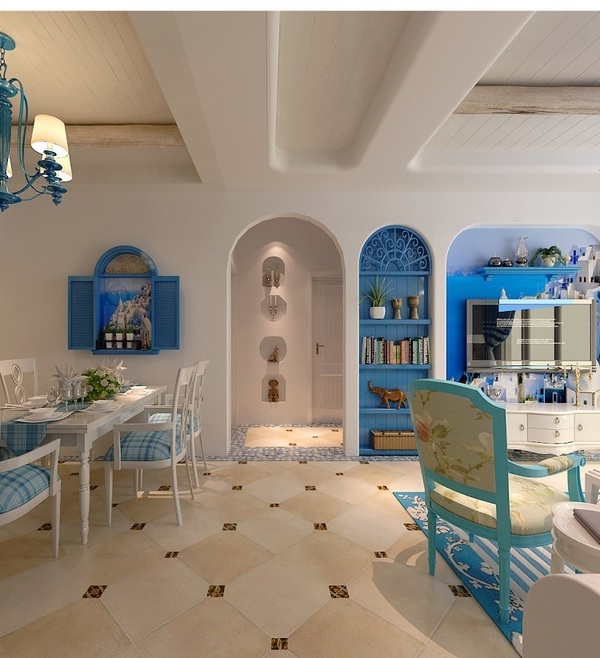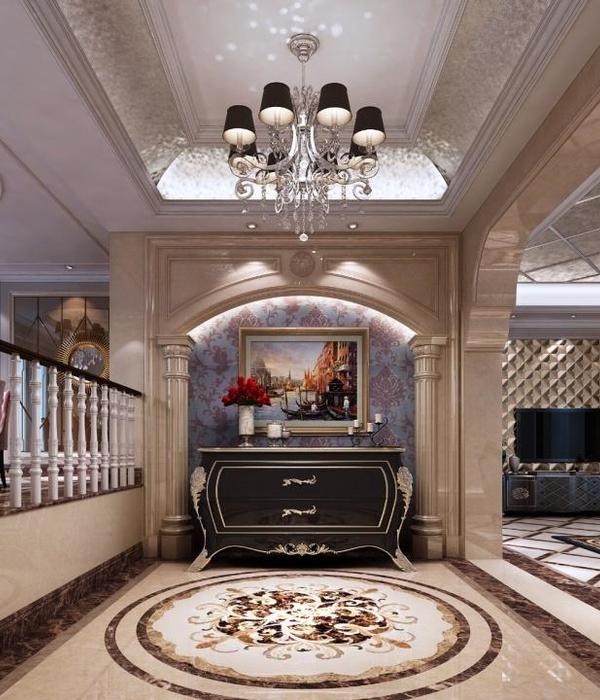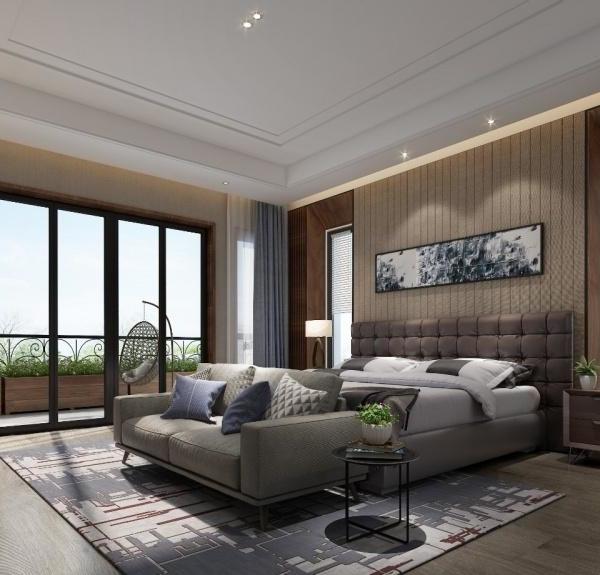架构师提供的文本描述。将寺庙向社区开放,作为一个与“生命”互动的地方。近年来,由于城市化而导致的当地社区的衰败,改变了日本人的宗教观,包括祖先崇拜,削弱了日本许多寺庙的财政基础-“济旦”(平民必须到寺庙登记以证明自己的佛教信仰)。查尔宫是一种新的墓葬样式,它不同于一代的墓园,不遵循传统的吉单制度,似乎顺应了当代的发展趋势。
Text description provided by the architects. Opens the temple to community as a place to interact with "life". In recent years, the decay of local communities due to urbanization has changed the Japanese sense of religion including ancestor worship, weakening the "Jidan" (system where commoners had to register with a temple to prove their Buddhist faith) which is the financial basis of many temples in Japan. Charnel house, which is a new style of grave that appeared as though it responded to the trend of the contemporary times, is different from the graveyard passed down from generation to generation and does not follow the traditional Jidan system.
© Masao Nishikawa
(c)MasaoNishikawa
在这段时间里,这座位于川口市的庙宇,把花园变成了殡仪馆和停车场,压榨了寺庙主建筑的外观。房子周围的高墙使这些建筑物成了一个封闭的区域。这座有40多年历史的小木屋,很少有人使用,它静静地站着.
Amidst such time period, this temple, which stands in the city of Kawaguchi, had the garden changed into a funeral hall and parking lot, oppressing appearance of the main temple building. The tall fences surrounding the premises made the buildings a closed area. The over 40-year-old charnel house, which was rarely in use, stood in a quiet way.
佛教最初不是仅仅支持家族继承的宗教。即使坟墓的形态发生了变化,参观Graves的风俗也不容易改变。这就是为什么我们不仅决定整修与"死亡"有关的房子,而且还决定把寺庙作为一个涉及到"生命的生活"的人的整体再现出来。
Buddhism is originally not a religion that just supports the succession of families. The custom of visiting graves does not change easily even if the form of graves change. This is why we decided not only to renovate the charnel house related to "death" but also to reproduce the temple as a whole that involves people with "life".
Basement Floor Plan
地下室平面图
© Masao Nishikawa
(c)MasaoNishikawa
原来的弧形前缘是笔直的,现有的花岗岩被用来聚焦于主寺庙的角度。它最初是靠前方的地方种植树木,在视觉上将这一地区划分为殡仪馆和礼拜区。沿着前方的栅栏都被拆除了,释放了传统宗教自然拥有的绘画力量。洗脸台、洗手间的位置,以及从“Shinobi no Komichi”(回忆的途径)和前面的方法延伸到的分支方式,都是根据礼拜活动和整个地段来决定的。聚集在一个地方的吉佐和佛陀石像沿着前面的方向适当地分布。
The originally curvy front approach was made straight, and existing granites were used to focus the perspective on the main temple. The place where it was originally the front approach was planted with trees to visually divide the area into funeral and worship areas. The fences along the front approach were then all removed, releasing the drawing power that a traditional religion naturally has. The locations of washstand, restroom, and the branching approaches that extend from the "Shinobi no komichi" (pathway of recollection) and the front approach were decided in relation to worship activity and the whole lot. Jizo and Buddha stone statues that had been gathered in one place were appropriately distributed along the front approach.
© Masao Nishikawa
(c)MasaoNishikawa
通过一次自然现象来设计崇拜的时间,而许多坟墓的形式已经转化为纪念碑和机制,依靠人为的预先确定的和谐,回忆死者的时间和空间应该是超越人类知识的。
Designs the hours of worship through one-time natural phenomenon While the forms of many graves have transformed into monuments and mechanism, relying on human-made pre-established harmony, the time and space for recollection of the dead should be something transcendent and beyond human knowledge.
© Masao Nishikawa
(c)MasaoNishikawa
前方两旁的树木和脚下的花朵,透过树木呈现阳光,在树叶的沙沙中呼啸而过,通过不同的花朵结果和盛开来说明季节的变化。卫生间、洗脸台的表现性墙壁和水槽上的涟漪,反映了一次自然现象,起到了滤除自然震颤的作用。这样,通往Charnel House的道路就被设定为“生命”的代表,而与之相反的是代表“死亡”的坟墓。水盆上的楼梯架桥起着分隔生死的边界作用。八角形的房子代表阴间;本质上是宇宙的形式。昏暗的入口处使人通过亮度差异意识到位置的变化。中心的螺旋楼梯由夯实的地球构成,允许天空的顶部光线进入,让你想起地下,并在旋转运动中促进反省。
The trees along both sides of the front approach and the flowers at one's feet show one the sunlight through trees, and wind through rustling of leaves, and tell the change of seasons through different fruiting and blooming of flowers. The expressive walls of restroom and washstand and the ripples on water basin reflect the one-time natural phenomenon and function as a filter of natural tremor. This way, the path leading to the charnel house was set as a representative of "life" in opposition with the charnel house and graves representing "death". The staircase bridging over the water basin functions as the boundary which separate life and death. The octagonal charnel house represents the Hades; essentially the form of the universe. The dim lit entrance makes one aware of the change in place through the luminance difference. The spiral staircase in the center made of rammed earth allows the top light from the sky to enter, reminding you of underground and promoting introspection within the rotational motion.
© Masao Nishikawa
(c)MasaoNishikawa
当你到达方格室时,明亮的门看起来就像行星。光线从竹子天花板的缝隙中流过,像太空中的星星一样闪烁。这就是你面对死者的地方。这一系列的建筑设施直接吸引你的知觉,沿时间顺序的崇拜。
When you reach the charnel chamber, the luminous doors look like planets. The light streaming in through the gap in the bamboo ceiling blink like the stars in the space. This is where you face the deceased. The series of architectural facilities appeal directly to your perception along the time sequence of worship.
© Masao Nishikawa
(c)MasaoNishikawa
监视生命周期的定点。
A fixed point to watch over cycle of life.
装修后,他们说有更多的游客陪着孩子。我们希望在夏天,孩子们会在水池里玩耍。他们小时候就会在寺庙里玩耍。他们会去寺庙并珍爱它。然后他们会结婚生子,最后通过。我们希望这座寺庙是一个能和平地观看这种生活循环的地方。该计划是将这座寺庙改造成原来的国家。寺庙应该保持不变。
After the renovation, they say there are more visitors accompanied by children. We wish that children would play in the water basin during summer. They would play in the temple in their childhood. They would visit the temple and cherish it. Then they would marry and have children, and eventually pass away. We hope that this temple would be a place to watch over such cycle of life peacefully. The plan was to reconstruct the temple into its original state. Temples should remain the same.
© Masao Nishikawa
(c)MasaoNishikawa
Architects Love Architecture
Location Saitama, Saitama Prefecture, Japan
Category Temple
Architect in Charge Yukio Asari
Area 191.7 sqm
Project Year 2015
Manufacturers Loading...
{{item.text_origin}}

